#roman coins
Text

Happy Wednesday, All!
Back in 2014 and 2015, I got to go to Valencia, Spain to work on my film Animal Crackers.
I was teaching myself watercolors and fell in love with the streets of Valencia. Finding time to sit alone and paint (when I should have been working on the film).
One day, at a market, there were vendors and I purchased some old Roman Coins (I hope they're legit... but... at this point... who cares?)
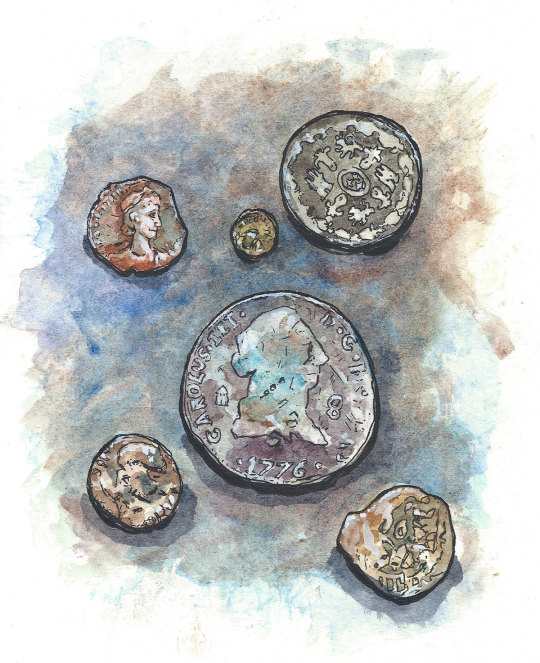
I hope I can go back again one day soon.
Sending Big Hugs from the Hobbit Hole. ♥♥♥
Scott
#art#traditional art#artists on tumblr#watercolor art#watercolor#drawing#journaling#sketchbook#valencia#spain#roman coins
830 notes
·
View notes
Photo
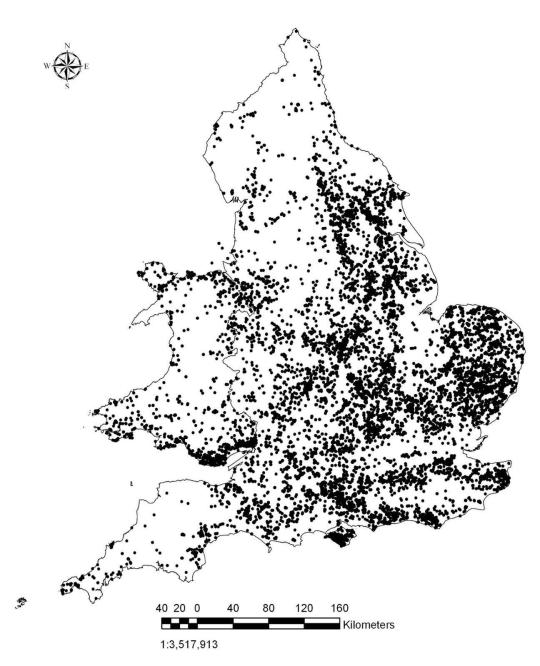
Where Roman coins have been found in Britain
210 notes
·
View notes
Text
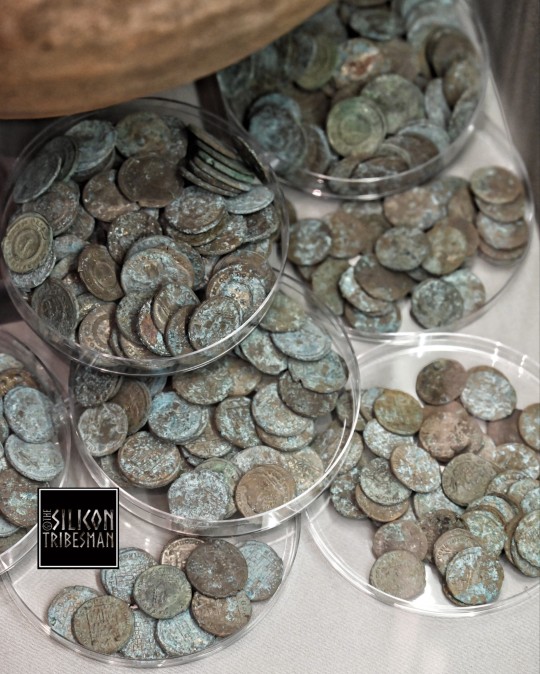
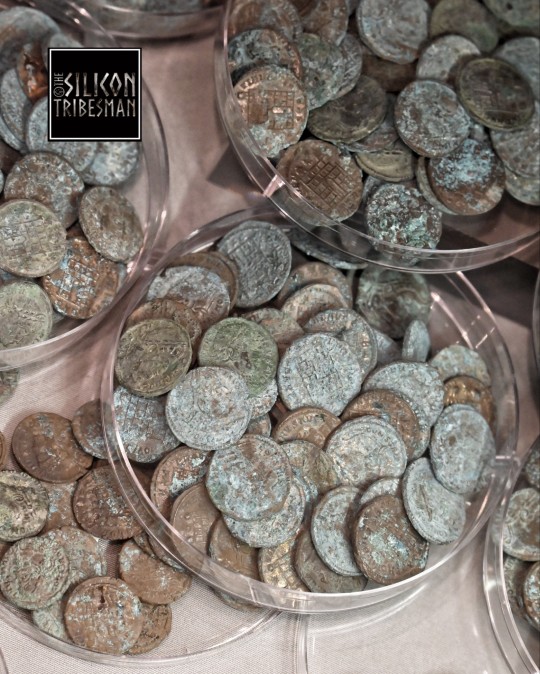
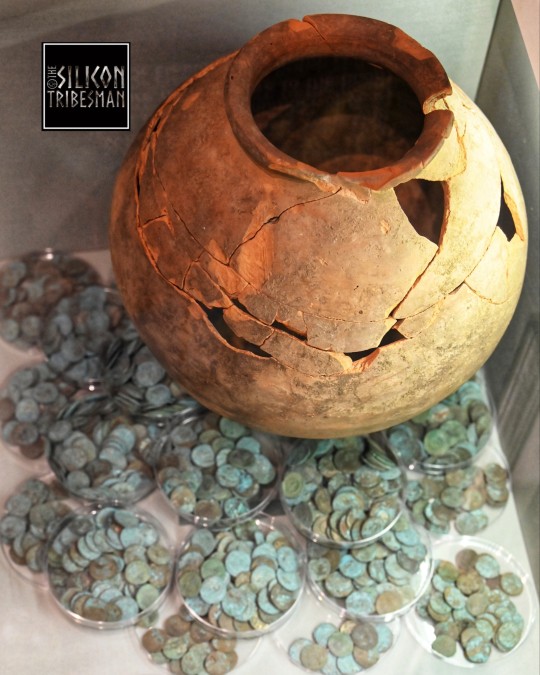

'The Shrewsbury Hoard' 4th Century CE Roman Hoard, Shrewsbury Museum, England
#roman army#roman hoard#roman#romans#roman coins#roman soldiers#roman pottery#roman wealth#hoard#archaeology#Shrewsbury#metalwork#metalworking#artefact#roman living#roman britain
288 notes
·
View notes
Text
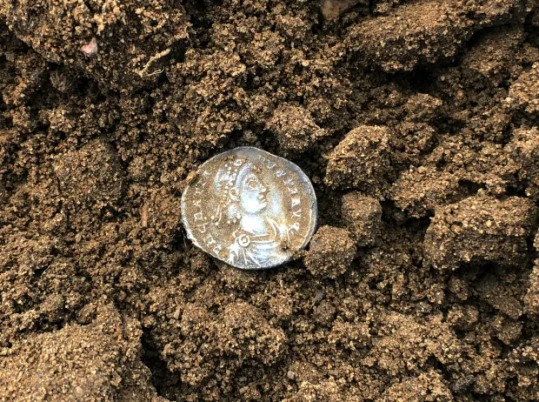
Roman Coin Hoard Found in England Sells at Auction
A hoard of Roman coins discovered by a metal detectorist scouring farmland has fetched more than £15,000 after going under the hammer.
More than 430 coins were found buried in the village of Colkirk, near Fakenham, Norfolk.
A collection of 73 pieces, including an extremely rare coin featuring a phoenix on a globe, was auctioned in London.
The anonymous finder had shown "perseverance", said coin specialist Nigel Mills, from Noonans auctioneers.
"Some of the people I've spoken to recently, who have found some amazing finds, are spending a lot of time detecting - hours and hours - and they don't give up," he said.

"They keep going and that's the secret in so many things - don't give up, keep looking."
The Colkirk hoard, believed to date back to the early 5th Century, was spread out across a third of an acre on arable farmland, although the majority of finds were discovered in a 1.5m (59in) radius.
It was a lucky find for the detectorist, who had no idea the soil held such treasures.
They were out searching a field in January 2020 when they spotted a silver coin, which they recognised as a siliqua - a small, thin Roman coin.
It sparked a haul of 40 coins that day, with a further 40 found on the following one.
Covid lockdowns meant searches became more sporadic, but each discovery was logged with a portable GPS unit to accurately pinpoint the hoard's distribution.
In all, 315 coins were found in 2020, 114 in 2021 and three in 2022.
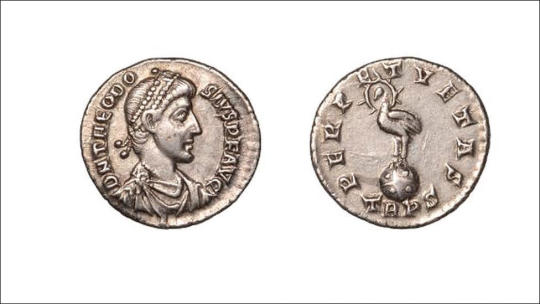
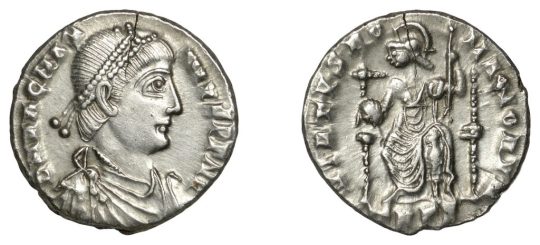
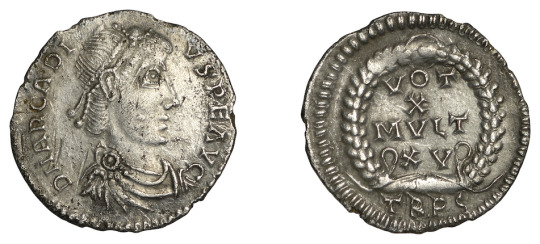
Some of the coins had been damaged, while others were fragmented due to farming processes.
A commemorative Third Miliarensis coin issued by Emperor Theodosius, decorated with a phoenix on one side, was only the fifth one of its type known to exist, with all the others in museums.
It reached £3,400 at the sale in Mayfair.
Mr Mills said: "The hoard had [been] spread out over a third of an acre through disturbance by ploughing and has been recorded under the Treasure Act.
"The hoard is likely to have been deposited at the beginning of the 5th Century AD, with the latest coin of Honorius dating no later than 402 AD.
"Other Roman treasure finds of gold and silver also from East Anglia, such as the Hoxne and Thetford hoards, reflect the wealth and importance of the area."

#Roman Coin Hoard Found in England Sells at Auction#village of Colkirk#metal detecting#coins#collectable coins#roman coins#ancient coins#ancient artifacts#archeology#archeolgst#history#history news#ancient history#ancient culture#ancient civilizations#roman history#roman empire#roman art
195 notes
·
View notes
Text

Roman silver coin minted in 55 BCE, during Julius Caesar's campaigns in Gaul, by Publius Fonteius Capito, one of the tresviri monetales (mint officials) for that year. On the obverse, the helmeted head of the war god Mars, with a small representation of a tropaeum (trophy) behind him. On the reverse, a Roman horseman rides down two enemy soldiers, identified by their helmets and shields as Gauls.
#classics#tagamemnon#history#ancient history#Ancient Rome#Roman Republic#Roman history#art#art history#ancient art#Roman art#Ancient Roman art#Roman Republican art#artifacts#artefacts#coins#ancient coins#Roman coins#Ancient Roman coins#numismatics#ancient numismatics#Roman numismatics
105 notes
·
View notes
Text
Coins of the Deified Augustus, 14-268 CE
The most fascinating thing about these types is how Augustus's portrait changes with the engraving style of the period as his portrait is sort of fused with that of the current emperor.

Divus Augustus Dupondius, struck under Tiberius.
A pretty much unaltered portrait of Augustus, something we won't be seeing often when it comes to these coins. Struck 22-23.

Divus Augustus under Tiberius, laureate head of Tiberius on obverse, laureate head of Augustus on reverse with star above. Struck 14-16.

Divus Augustus under Caligula, struck 37. Bare head of Caligula right on obverse, Radiate head of Augustus right on reverse, two stars to each side of bust.

Divus Augustus, struck in Spain(?) during the civil wars that took place between 68 and 69. Radiate head of Augustus on obverse. Pax standing left and holding a caduceus on reverse.
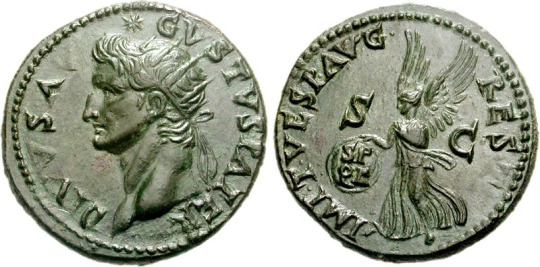
Divus Augustus under Titus (restitution issue that takes the design of that Tiberius Dupondius). Struck 80-81.

Divus Augustus As issued under Nerva (kind of a restitution issue, but not really) Struck 97-98. Eagle perched on thunderbolt on reverse.
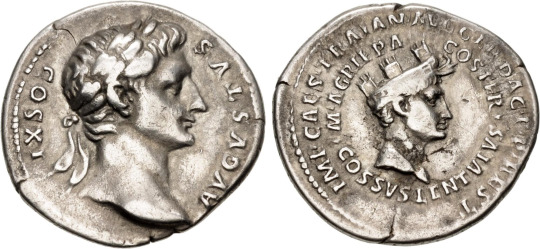
Under Trajan, another restoration issue of one of Augustus's denarii and technically not a Divus issue but I'm still putting here because I like it. Struck 107 or 112-113
Reverse depicts his bestie Agrippa

Cistophoric Tetradrachm struck under Hadrian, 128 (Augustus is literally just a beardless Hadrian here) Reverse depicts Hadrian holding some corn ears.

Skipping forward quite a bit, Divus Augustus Antoninianus issued under Trajan Decius as a part of his "Divus" series of coins. Reverse depicts a lit altar. Struck 249-251.
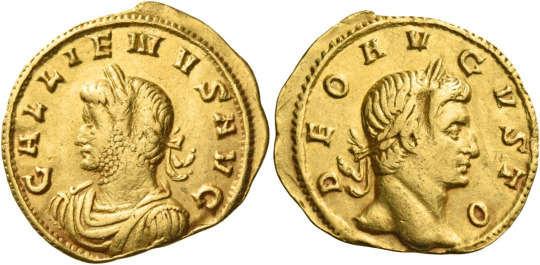
Deo Augusto issue, this one is really interesting as it is *theorized* that this was struck as a way to ask for aid from Augustus the god during Gallienus's disastrous reign. Struck 260-268.
#ancient coins#ancient rome#ancient art#ancient history#roman art#history#roman coin#roman coins#roman empire#roman emperor
78 notes
·
View notes
Text
As the Ides of March approaches, I'd like to remind you that this coin exists.

Brutus issued this denarius to commemorate the assassination of Caesar. I love how the coin is like:
It is time to celebrate the #idesofmarch, guys! #stab #stab #hat
#the hat is a pileus which symbolizes liberty#but id like to think there was just some random hat on that ides of march coin#stab#hat#ancient rome#tagamemnon#brutus#cassius#gaius julius caesar#julius caesar#ides of march#the ides of march#roman history#pileus#ancient clothing#funny#roman coins#march 15#et tu brute
194 notes
·
View notes
Text

Fulvia AR denarius issued by Marcus Antonius. Rome mint, ca. 42 BC, 3.5 gm, 17.0 mm. Ob. draped bust of Fulvia as victory. Rev. victory in biga holding reins of two horses. Inscribed, L MVSSIDIVS LONGVS
Mark Antony's 2nd wife Fulvia was the first roman woman to be portrayed on coins. Beautifully toned attractive portrait of Fulvia Flacca Bambula. Somewhat rough around the edges and the reverse struck slightly off center, otherwise, very fine.
#fulvia#mark antony#marcus antonius#numismatics#denarius#silver coins#roman coins#coins#ancient coins#ancient rome#rome#roman history#roman republic#roman empire
23 notes
·
View notes
Text
What mysteries lie at the captivating Badbury Rings hill fort nestled in the heart of Dorset's picturesque countryside? From its Celtic origins to its Roman connections, this historic site transports us to another era. Owned by the influential Bankes noble family for generations, it wasn't until Sir Henry John Ralph Bankes' passing in 1982 and the subsequent transfer of the estate to the National Trust that opportunities arose for the long-awaited exploration of the site.
Excavations uncovered numerous artifacts, including pottery from the mid to late Iron Age, silver and bronze coins from the Durotriges tribe, as well as Roman coins, glass beads, and bronze jewelry. However, these findings suggest that the hill fort had a relatively short period of habitation. The emergence of the nearby Romano-British settlement, Vindocladia, led to the gradual abandonment of Badbury Rings, allowing it to succumb to the passage of time.
The allure of Badbury Rings still persists, where history whispers through the windswept fields of Shapwick, revealing the resilience of ancient Britain against the tides of time.
21 notes
·
View notes
Text
This sounds like an exciting site for archaeology. Lots left to do.
15 notes
·
View notes
Text
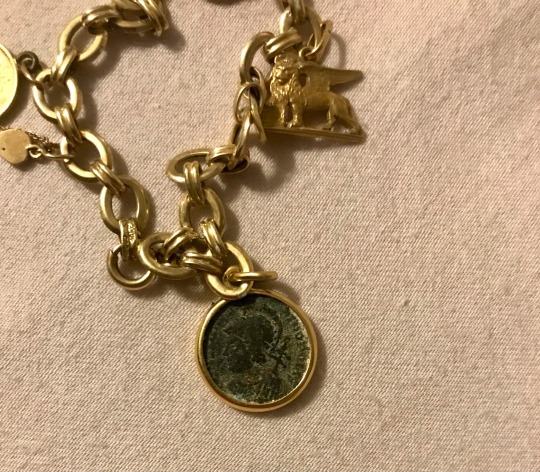
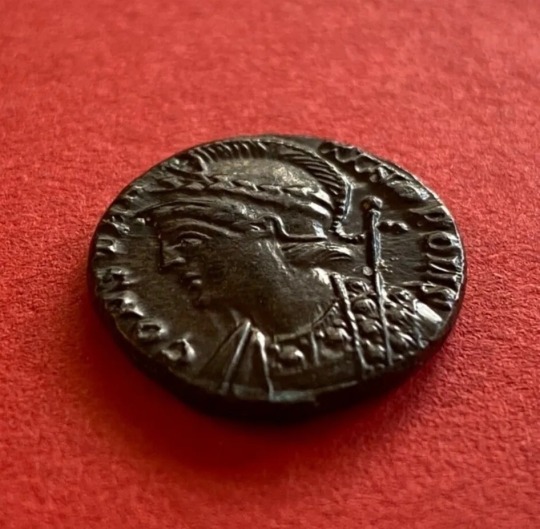
My dad gave me this bracelet when I was 11-12 when I went to visit him in Austria. It totally went over my head that he had included an ancient Roman coin on it. He told me it was a coin they found on a dig locally but I actually looked it up and it’s a Roman Constantine coin approximately from 300-400AD… apparently the left facing profile is a rare one. It’s a copper alloy.
14 notes
·
View notes
Text


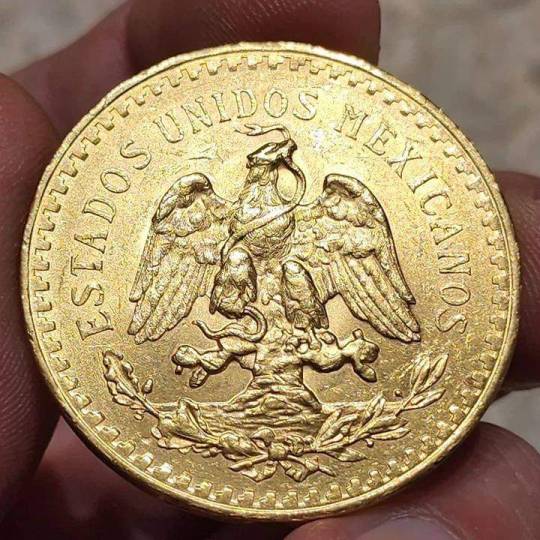
50 dollar mexican pesos gold coin
Bin:$2,450
#black metal#heavy metal#precious metals#coin slot#coinstats#meme coins#roman coins#ancient coins#my coins#crypto coins#mexican#pesos#mexican culture#gold coins#money#make money from home
5 notes
·
View notes
Text
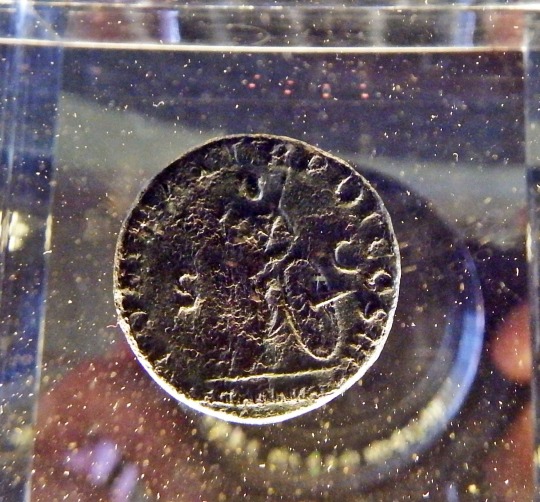
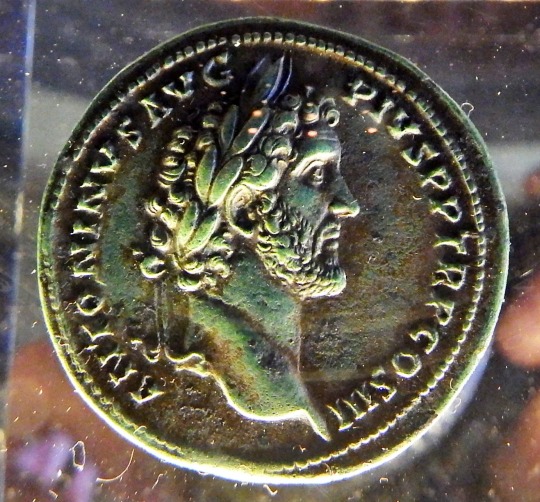
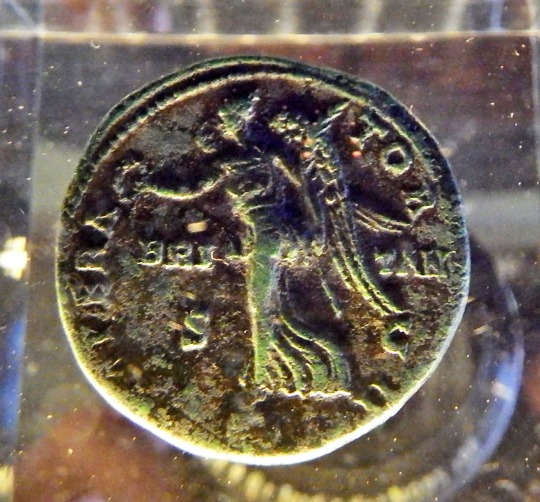
Hunterian Museum. Roman Coins.
As I mentioned in my last post the museum has a massive collection of coins, this three are part of the Antonine Wall "Rome's Final Frontier exhibition.
The first coin predates The Antonine Wall and was struck to commemorate Hadrian's Wall. It dates to around the year 120 and the figure is "Britannia", arguably the first time she was used on a coin, and still being used on Royal Mint coins nowadays.
The second shows Antoninus Pius who was 52 years old when he was adopted by Hadrian. On that day, he in turn adopted (at Hadrian's request) Marcus Aurelius, who was seventeen. In such a way, Hadrian sought to ensure the succession to the throne. Antonius ordered the army to push north again. They occupied Scotland as far as Perth and built another wall, this time of turf and earth, between the Firth of Forth and the Firth of Clyde which formed a natural pinch point in the land. The Antonine Wall is one our six UNESCO World Heritage sites. Antonius ruled the Roman empire for twenty-three years, until his death at age 75.
The third coin shows Victory, winged, draped, standing, left on globe, holding wreath in extended right hand and palm upwards at shoulder in left, it is also from the time of Antoninus Pius and dates from 143-44 and commemorates Victory in Britain.
The Hunterian collection contains Ancient Greek, Roman, Medieval and Modern coins as well as medals from the Renaissance to contemporary Scotland. Many of these are unique or extremely rare and most are in superb condition.
#Scotland#scottish#glasgow#hunterian musem#roman coins#Antonine Wall Romes Final Frontier#history#my pis
10 notes
·
View notes
Text

Discovery of Roman Buried Coins in Wales Declared Treasure
Two sets of coins found by metal detectors in Wales are actually Roman treasure, the Welsh Amgueddfa Cymru Museum announced in a news release.
The coins were found in Conwy, a small walled town in North Wales, in December 2018, the museum said. David Moss and Tom Taylor were using metal detectors when they found the first set of coins in a ceramic vessel. This hoard contained 2,733 coins, the museum said, including "silver denarii minted between 32 BC and AD 235," and antoniniani, or silver and copper-alloy coins, made between AD 215 and 270.
The second hoard contained 37 silver coins, minted between 32 BC and AD 221. Those coins were "scattered across a small area in the immediate vicinity of the larger hoard," according to the museum.
"We had only just started metal-detecting when we made these totally unexpected finds," said Moss in the release shared by the museum. "On the day of discovery … it was raining heavily, so I took a look at Tom and made my way across the field towards him to tell him to call it a day on the detecting, when all of a sudden, I accidentally clipped a deep object making a signal. It came as a huge surprise when I dug down and eventually revealed the top of the vessel that held the coins."
The men reported their finds to the Portable Antiquities Scheme in Wales. The coins were excavated and taken to the Amgueddfa Cymru Museum for "micro-excavation and identification" in the museum's conservation lab. Louise Mumford, the senior conservator of archaeology at the museum, said in the news release that the investigation found some of the coins in the large hoard had been "in bags made from extremely thin leather, traces of which remained." Mumford said the "surviving fragments" will "provide information about the type of leather used and how the bags were made" during that time period.
The coins were also scanned by a CT machine at the TWI Technology Center Wales. Ian Nicholson, a consultant engineer at the company, said that they used radiography to look at the coin hoard "without damaging it."

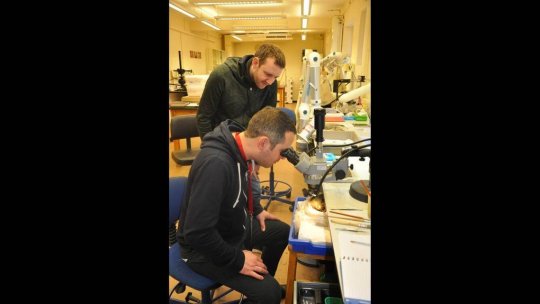
"We found the inspection challenge interesting and valuable when Amgueddfa Cymru — Museum Wales approached us — it was a nice change from inspecting aeroplane parts," Nicholson said. "Using our equipment, we were able to determine that there were coins at various locations in the bag. The coins were so densely packed in the centre of the pot that even our high radiation energies could not penetrate through the entire pot. Nevertheless, we could reveal some of the layout of the coins and confirm it wasn't only the top of the pot where coins had been cached."
The museum soon emptied the pot and found that the coins were mostly in chronological order, with the oldest coins "generally closer to the bottom" of the pot, while the newer coins were "found in the upper layers." The museum was able to estimate that the larger hoard was likely buried in 270 AD.
"The coins in this hoard seem to have been collected over a long period of time. Most appear to have been put in the pot during the reigns of Postumus (AD 260-269) and Victorinus (AD 269-271), but the two bags of silver coins seem to have been collected much earlier during the early decades of the third century AD," said Alastair Willis, the senior curator for Numismatics and the Welsh economy at the museum in the museum's news release.
Both sets of coins were found "close to the remains of a Roman building" that had been excavated in 2013. The building is believed to have been a temple, dating back to the third century, the museum said. The coins may have belonged to a soldier at a nearby fort, the museum suggested.
"The discovery of these hoards supports this suggestion," the museum said. "It is very likely that the hoards were deposited here because of the religious significance of the site, perhaps as votive offerings, or for safe keeping under the protection of the temple's deity.
By Kerry Been.
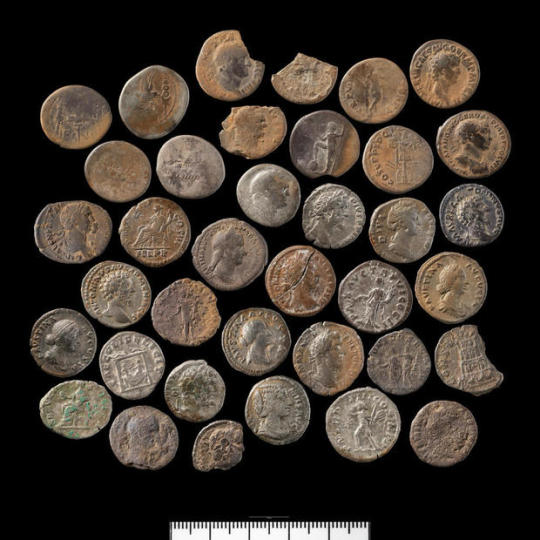
#Discovery of Roman Buried Coins in Wales Declared Treasure#coins#collectable coins#roman coins#metal detecting#ancient artifacts#archeology#archeolgst#history#history news#ancient history#ancient culture#ancient civilizations#roman history#roman empire#roman art
165 notes
·
View notes
Text

Dupondius of the Roman emperor Tiberius (r. 14-37 CE), minted in 34-35. On the obverse, the bust of Tiberius, crowned with laurel; Tiberius here styles himself DIVI AUG(USTI) F(ILIUS)="Son of the deified Augustus". On the reverse, a male portrait bust within a shield-ring, surrounded by the inscription CLEMENTIAE S(ENATUS) C(ONSULTO). This may be a reference to the shield voted to Augustus by the Senate in 27 BCE, which bore the inscribed virtues of virtus, clementia, iustitia, and pietas. Following the lead of Julius Caesar, Augustus and his successors stressed clementia as a characteristic trait of the emperor, who had it in his power to extend mercy to defeated enemies. In this case, there is a certain irony to the imagery, as Tiberius' last years were marked by many trials and condemnations for offenses against the imperial maiestas at the behest of informers.
#classics#tagamemnon#history#ancient history#Ancient Rome#Roman Empire#Roman history#Tiberius#art#art history#ancient art#Roman art#Ancient Roman art#Roman Imperial art#coins#ancient coins#Roman coins#Ancient Roman coins#dupondius#numismatics#ancient numismatics#Roman numismatics
99 notes
·
View notes
Text
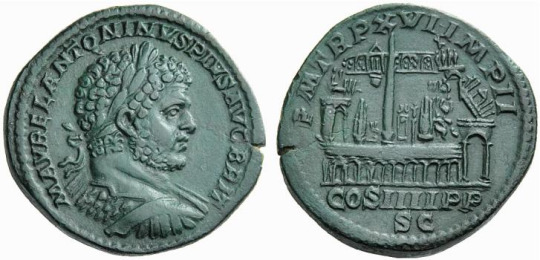
Sestertius of Caracalla, minted in 213 CE. Reverse depicts a view of the Circus Maximus.
Out of all the famous evil Roman Emperors, Caracalla is probably the least talked about. I really don't see much discussion about him.
Caracalla was born on the 4th of April, 188 in Lugdunum to Septimius Severus and Julia Domna. His heinous actions later in life can be attributed to his slow descent into degeneracy and growing rivalry with his brother Geta during their father's reign.
The most famous of Caracalla's heinous antics was the murder of his brother Geta, whom he utterly despised. Caracalla and Geta's relationship can be summarized as possibly the most destructive and petty sibling rivalry in Roman history. The rivalry ended up being so intense that when it came time for the two of them to ascend to the throne, they divided the imperial palace into two and almost divided the empire in half before being talked out of it by their mother. Caracalla didn't intend to share the throne for long though and planned to have Geta murdered.
On December 26th, 211, Caracalla had arranged for a reconciliation meeting that he had discussed with his mother about, telling her he wanted to make amends with Geta and move past their rivalry, and asked her to invite Geta to the meeting so that the three of them could work out their differences. Instead, during the meeting Caracalla had his guards burst into the room and slaughter Geta Infront of their mother. He then ordered massacre of anyone who associated with Geta, which included all classes of citizens. Around 20,000 people were massacred.
He also ordered that Geta's image was to be systematically erased throughout the empire, having his likeness erased from monuments and coins alike.
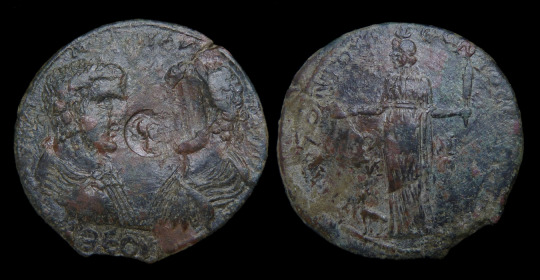
A formerly dual-portrait coin of Caracalla and Geta, with Geta's face hacked off.
One of the other atrocities that Caracalla committed was the massacre of Alexandria. There are differencing accounts of how and why the massacre happened, but the general narrative is that while Caracalla was visiting the city, the citizens openly mocked the murder of Geta and constantly jeered at Caracalla, which in turn made him plot their destruction. it is usually accepted that Caracalla went about the massacre by luring a large group of people into a confined area and then having his troops move in and slaughter them. The victims were either regular civilians, a group of his wealthy detractors, or young men hoping to be a part of a special unit Caracalla was raising for his eastern campaign. Either way it was an unnecessary bloodbath.
Finally, my favorite part of collecting Caracalla's coins is the way his portrait gets more and more pissed off over time.

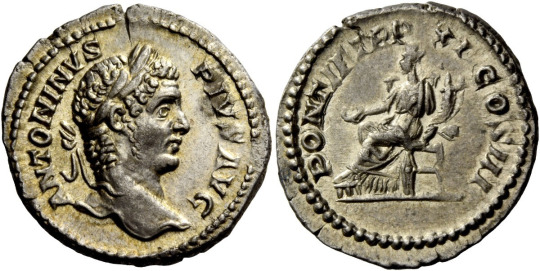

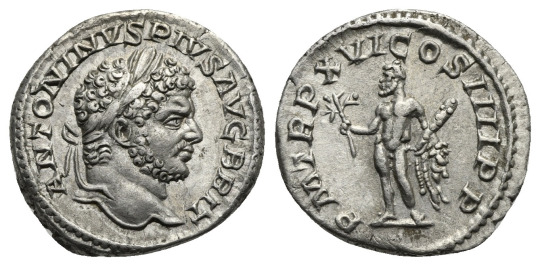

#ancient coins#ancient rome#roman history#ancient art#ancient history#classics#history#roman art#art#classical art#roman mythology#sestertius#denarius#caracalla#roman coins#classical mythology#evil roman emperor
9 notes
·
View notes